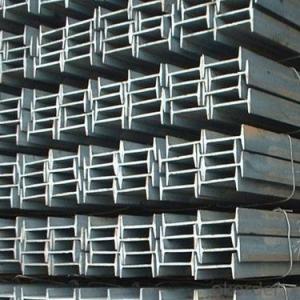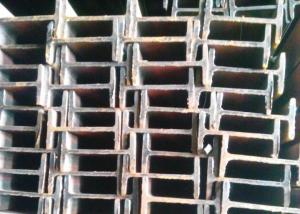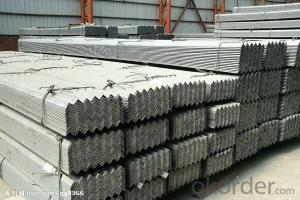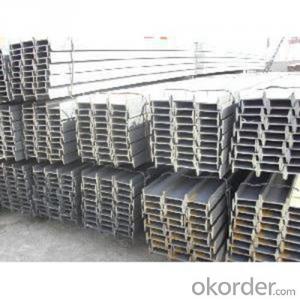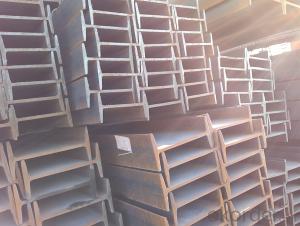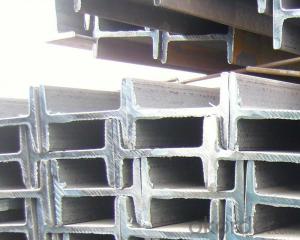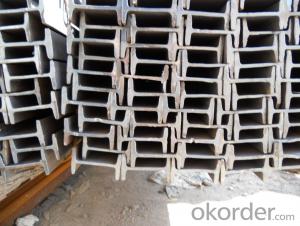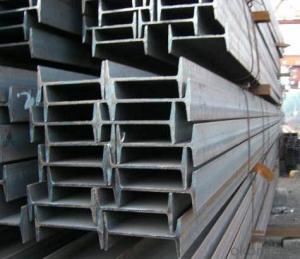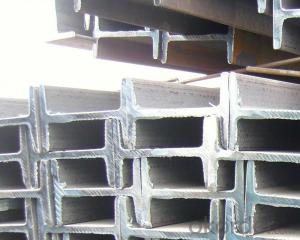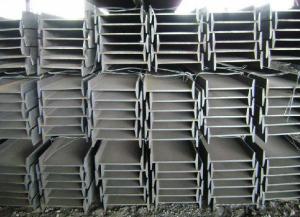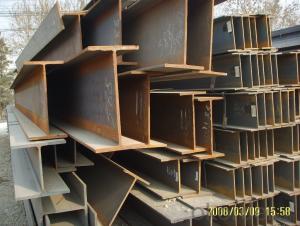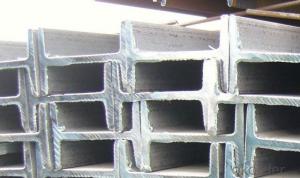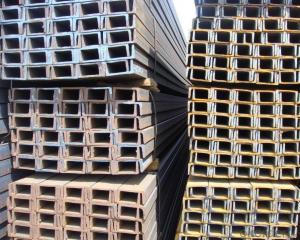European Standard IPE140 with High Quality
- Loading Port:
- Tianjin
- Payment Terms:
- TT OR LC
- Min Order Qty:
- 25 m.t
- Supply Capability:
- 15000 m.t/month
OKorder Service Pledge
OKorder Financial Service
You Might Also Like
Product Description of European Standard IPE140 with High Quality:
Specifications of European Standard IPE140 with High Quality:
1.Standard: EN10025
2.Material: S235JR or Equivalent
3.Length: 6m, 12m
4.Size:
Size (mm) | Mass (kg/m) |
| 140*73*4.7 | 12.9 |
Usage & Applications of European Standard IPE140 with High Quality:
Commercial building structure;
Pre-engineered buildings;
Machinery support structures;
Prefabricated structure;
Medium scale bridges.
Packaging & Delivery of European Standard IPE140 with High Quality:
1. Transportation: the goods are delivered by truck from mill to loading port, the maximum quantity can be loaded is around 40MTs by each truck. If the order quantity cannot reach the full truck loaded, the transportation cost per ton will be little higher than full load.
2. With bundles and load in 20 feet/40 feet container, or by bulk cargo, also we could do as customer's request.
3. Marks:
Color mark: There will be color marking on both end of the bundle for the cargo delivered by bulk vessel. That makes it easily to distinguish at the destination port.
Tag mark: There will be tag mark tied up on the bundles. The information usually including supplier logo and name, product name, made in China, shipping marks and other information request by the customer.
If loading by container the marking is not needed, but we will prepare it as customer's request.
FAQ:
We have organized several common questions for our clients, may help you sincerely:
1. How to inspect the quality?
We have a professional inspection group which belongs to our company. We resolutely put an end to unqualified products flowing into the market. At the same time, we will provide necessary follow-up service assurance.
We have established the international advanced quality management system,every link from raw material to final product we have strict quality test;We resolutely put an end to unqualified products flowing into the market. At the same time, we will provide necessary follow-up service assurance.
2. Is there any advantage about this kind of product?
Steel I beam bar IPE has a reduced capacity in the transverse direction, and is also inefficient in carrying torsion, for which hollow structural sections are often preferred.
Images of European Standard IPE140 with High Quality:
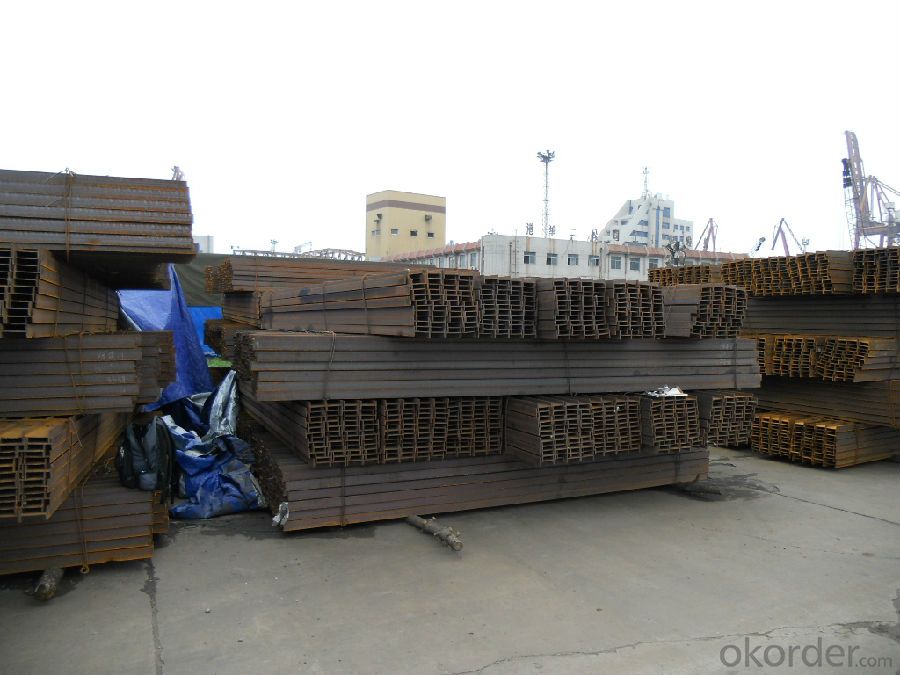
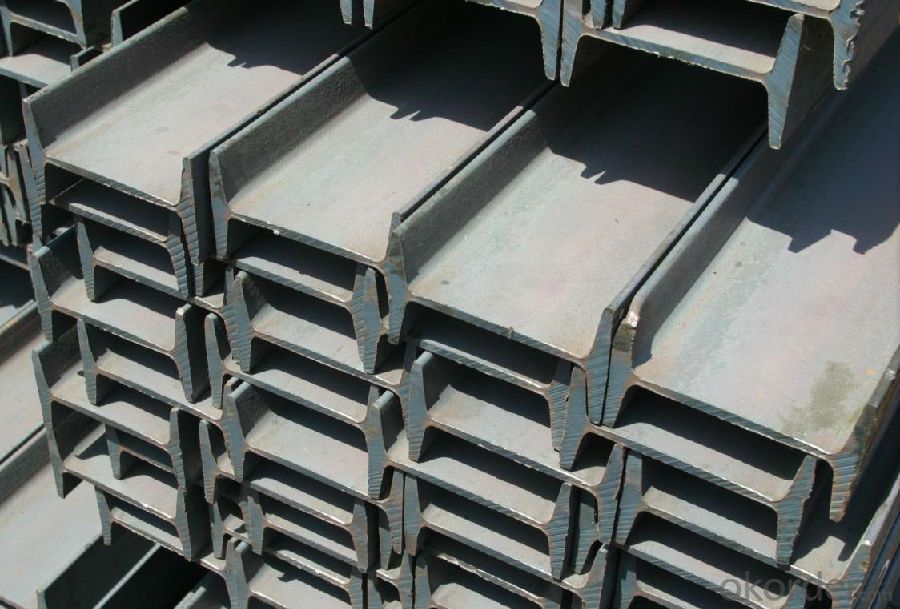
*If you would like to get our price, please inform us the size, standard/material and quantity. Thank you very much for your attention.
- Q: Can steel I-beams be used in retail or commercial renovation projects?
- Certainly, steel I-beams are suitable for utilization in retail or commercial renovation ventures. Renowned for their robustness and durability, steel I-beams are an ideal choice for supporting hefty loads and ensuring structural stability. In the context of retail or commercial renovation, these steel I-beams can be employed to establish open and flexible floor plans, bolster mezzanine levels, fortify existing structures, or even erect new structures. Moreover, they can be effectively utilized to construct expansive windows or atriums, as they possess exceptional load-bearing capacities. Furthermore, the fire resistance and resilience to pests and decay exhibited by steel I-beams often render them the preferred option in renovation undertakings. All in all, steel I-beams are extensively favored in retail or commercial renovation projects due to their versatility, strength, and ability to endure the rigors of heavy usage.
- Q: Are steel I-beams suitable for supporting heavy machinery?
- Steel I-beams are indeed appropriate for supporting heavy machinery. Their exceptional durability and load-bearing capacity render them widely utilized in construction and industrial settings. Specifically engineered to withstand substantial loads and offer structural reinforcement, the I-beam shape enables efficient weight distribution, making it the perfect choice for supporting heavy machinery. Furthermore, steel I-beams exhibit remarkable resistance to deformation, ensuring their dependability in demanding tasks.
- Q: Can steel I-beams be used in power plants?
- Yes, steel I-beams can be used in power plants. They are commonly used to support heavy loads and provide structural stability in various applications, including power plant construction.
- Q: Which bearing capacity is big, I-beam or H?
- The cross-sectional area of the same situation, steel bearing capacity is stronger, because of relatively large parts of the distribution of material force, should be less stress smaller than H material so I-beam steel section stress closer to isotensoid.
- Q: How do steel I-beams perform in high temperature environments?
- Steel I-beams perform well in high temperature environments due to their excellent thermal conductivity and low thermal expansion. They can withstand extreme heat without losing their structural integrity or strength. However, prolonged exposure to very high temperatures can cause them to deform or weaken, so it is important to consider fire protection measures when using steel I-beams in such environments.
- Q: Are there any limitations to the depth of steel I-beams?
- Yes, there are limitations to the depth of steel I-beams. The depth of an I-beam is typically limited by practical manufacturing constraints and the requirements of the specific application. As the depth increases, the weight and cost of the beam also increase. Additionally, there may be limitations based on the available space or height restrictions in the construction project. Ultimately, the depth of steel I-beams is determined by a combination of structural, economic, and practical considerations.
- Q: Are steel I-beams cost-effective compared to other structural options?
- Yes, steel I-beams are generally considered to be cost-effective compared to other structural options. They offer a high strength-to-weight ratio, which allows for efficient use of materials and reduced construction costs. Additionally, steel I-beams have excellent load-bearing capabilities, providing durability and long-term cost savings by minimizing the need for repairs or replacements.
- Q: How do you reinforce a steel I-beam?
- Different methods can be utilized to reinforce a steel I-beam, depending on the specific circumstances and requirements. Here are a few commonly employed approaches: 1. Welding extra steel plates: One way to reinforce the I-beam is by welding additional steel plates onto its flanges or web. These plates can be strategically placed to enhance the beam's load-carrying capacity and strength. The size and thickness of the plates will depend on the necessary reinforcement. 2. Incorporating steel sections: Another option involves adding supplementary steel sections to the existing I-beam. This can be achieved by welding or bolting them together to form a composite beam. By combining multiple beams, the overall stiffness and strength of the structure can be improved. 3. Implementing external bracing: External bracing can be employed to reinforce the I-beam. This entails attaching braces or cross-members to the beam to provide additional support and prevent buckling or twisting. Bracing can be made from various materials such as steel or concrete, and its design will be tailored to the specific load and structural requirements. 4. Using carbon fiber reinforcement: Carbon fiber materials can be utilized to strengthen steel I-beams. Carbon fiber sheets or strips can be bonded to the beam's surface using epoxy resin. This technique adds strength and stiffness to the beam while also offering corrosion resistance and maintaining a lightweight structure. 5. Employing post-tensioning: Post-tensioning is a technique where high-strength steel tendons or cables are installed within the beam and then tensioned. This process applies compressive forces to the beam, increasing its load-carrying capacity and reducing deflection. Post-tensioning is commonly employed in larger structures and requires specialized expertise. It is important to emphasize that the reinforcement of a steel I-beam should only be carried out by a qualified structural engineer or professional who possesses knowledge of the specific requirements and load conditions. They can evaluate the structural needs, determine the necessary reinforcement, and ensure that the modifications comply with relevant building codes and standards.
- Q: What are the different aesthetic options available for steel I-beams?
- Steel I-beams offer various aesthetic options to enhance their appearance and seamlessly integrate them into architectural designs. Some popular choices include: 1. Powder coating: Steel I-beams can be powder coated in a wide range of colors and finishes, allowing them to match or complement the surrounding environment or architectural elements. This process not only protects against corrosion but also provides a durable and attractive finish. 2. Galvanization: Galvanizing steel I-beams involves applying a layer of zinc coating to protect against rust and corrosion. This option gives the beams a distinct silver-gray appearance, which can add an industrial or contemporary aesthetic to the overall design. 3. Polishing: Polishing steel I-beams creates a smooth and reflective surface, giving them a sleek and modern look. This option is commonly used in contemporary architectural designs that aim for a high-end, luxurious feel. 4. Brushed finish: A brushed finish involves creating fine lines on the surface of the steel I-beam, providing a unique texture and a more tactile experience. This option is often chosen for designs that seek to incorporate artistic expression. 5. Custom paint or coating: Steel I-beams can be customized with specific paint colors or coatings to match the desired aesthetic. This allows for creativity and personalization, making it ideal for projects with a specific color scheme or branding. It's important to consider that the availability of aesthetic options for steel I-beams may vary depending on the manufacturer, project requirements, and budget limitations. Seeking advice from professionals such as architects, engineers, or steel fabricators can offer valuable insights and recommendations on the best aesthetic options for steel I-beams in a particular project.
- Q: Can steel I-beams be used for soundproofing or acoustical applications?
- No, steel I-beams are not typically used for soundproofing or acoustical applications. Steel I-beams are structural components commonly used in construction to provide support and stability to buildings, bridges, and other structures. They are not designed or intended to specifically address sound transmission or control. When it comes to soundproofing or acoustical applications, other materials and techniques are typically employed. These may include insulation materials, such as fiberglass or mineral wool, which are specifically designed to absorb sound and reduce its transmission. Additionally, specialized acoustic panels or soundproofing systems, such as resilient channels or double stud walls, are commonly used to create sound barriers and minimize sound transfer between spaces. While steel I-beams may offer some level of sound reduction due to their mass and density, they are not the most effective solution for soundproofing or acoustical purposes. Therefore, if sound control is the primary objective, it is advisable to explore alternative materials and methods specifically designed for this purpose.
Send your message to us
European Standard IPE140 with High Quality
- Loading Port:
- Tianjin
- Payment Terms:
- TT OR LC
- Min Order Qty:
- 25 m.t
- Supply Capability:
- 15000 m.t/month
OKorder Service Pledge
OKorder Financial Service
Similar products
Hot products
Hot Searches
Related keywords
